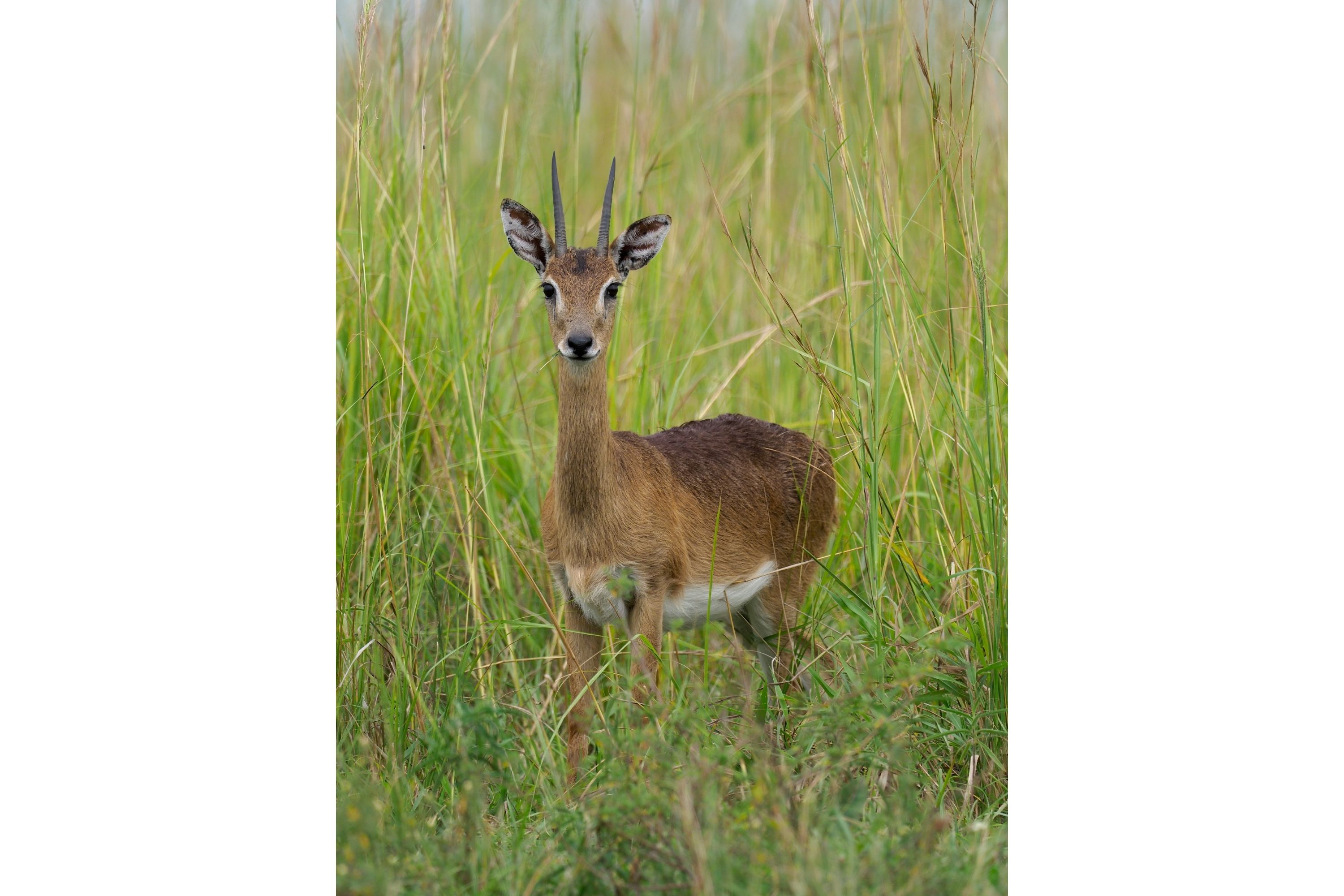Oribi
(Ourebia ourebi)

Description
The oribi (/ˈɔːrəbi/; Ourebia ourebi) is a small antelope found in eastern, southern and western Africa. The sole member of its genus, it was described by the German zoologist Eberhard August Wilhelm von Zimmermann in 1783. Eight subspecies are identified. The oribi reaches nearly 50–67 centimetres (20–26 in) at the shoulder and weighs 12–22 kilograms (26–49 lb). It possesses a slightly raised back, and long neck and limbs. The glossy, yellowish to rufous brown coat contrasts with the white chin, throat, underparts and rump. Only males possess horns; the thin, straight horns, 8–18 centimetres (3.1–7.1 in) long, are smooth at the tips and ringed at the base. Typically diurnal, the oribi is active mainly during the day. Small herds of up to four members are common; males defend their group's territory, 25–100 hectares (62–247 acres) large. It is primarily a grazer, and prefers fresh grasses but also browses occasionally. A seasonal breeder, the time when mating occurs varies geographically. Unlike all other small antelopes, oribi can exhibit three types of mating systems, depending on the habitat – polyandry, polygyny and polygynandry. Gestation lasts for six to seven months, following which a single calf is born; births peak from November to December in southern Africa. Weaning takes place at four to five months. The scientific name of the oribi is Ourebia ourebi. The sole member of its genus, the oribi is placed under the family Bovidae. The species was first described by the German zoologist Eberhard August Wilhelm von Zimmermann in 1782. It was formerly included in the tribe Neotragini, that comprised a variety of other dwarf antelopes, including Dorcatragus (beira), Madoqua (dik dik), Neotragus, Oreotragus (klipspringer) and Raphicerus. In 1963, German mammalogist Theodor Haltenorth separated the oribi and Raphicerus into a new tribe, Raphicerini; later on, zoologist Jonathan Kingdon assigned the oribi to Ourebini, a tribe of its own.The common name "oribi" comes from the Afrikaans name for the animal, oorbietjie. In a revision of the phylogeny of the tribe Antilopini on the basis of nuclear and mitochondrial data in 2013, Eva Verena Bärmann (of the University of Cambridge) and colleagues showed that the oribi is the sister taxon to all other antilopines. The cladogram below is based on the 2013 study.
Taxonomic tree:







